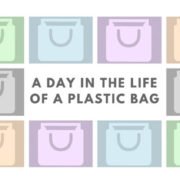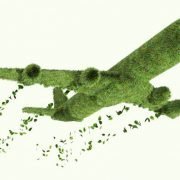A Day in the Life of a Plastic Bag
When Katie Perry released her song “Firework” in 2010, she raised an existential question when she asked: “Do you ever feel like a plastic bag?” If you’re one of those people who at some point wondered how does it actually feel to be a plastic bag, read on because today is your lucky day and you’re about to find out. If you’re not one of those people, read on anyway because this stuff is pretty interesting.
Today we’ll take you through the journey of a plastic bag called “Plastia”, your average plastic bag next door, who just like her other fellow plastic bags, is desperately trying to find her way back “home”. At first, Plastia might appear quite harmless and even useful. After all, she’s just trying to help you carry all your groceries back home. But don’t let appearances fool you, she’s not as innocent or well-intentioned as she seems. Just like her 160,000 brothers and sisters who are used globally every second, Plastia has known since day one that she has a bigger purpose in life and that she must find her way to her Promised Kingdom: the deep bottom of the ocean.
When you think of dangerous sea creatures, you probably think of sharks, sea snakes, jellyfishes or crocodiles. Now you can add one more creature to the list: Plastic Bags. Yes, you read that correctly. Plastic Bags are one of the world’s most dangerous “creatures” and they cause the biggest threat to our oceans. And the sad part is that they are everywhere, in every corner, in every home.
But back to Plastia who has just landed in your home. For most of us, our interaction with plastic bags is limited to our trip from the supermarket until we reach home and the bags are emptied. For Plastia though, that’s just a very short span in her long, long life which starts the day she is manufactured from tiny granules that are extracted from oil by the seas (where she will most likely end up back to eventually). After her birth in the factory, she is sold to shops or supermarkets where she waits impatiently for you to get her out of there. Luckily for Plastia, that day has finally come. As you head out of the supermarket, Plastia looks ahead as an empty plastic bag that accidentally made his way out by clinging on to the rest is blown away by the wind. She wonders if their paths will ever cross again someday. She is now transported to her new home, a welcome change from the supermarket, but she knows she won’t last long there as you have no more use for her now that you’ve emptied her. Some of her friends get recycled as garbage bags and Plastia is relieved that she’s been spared from that mission. After being tossed away with the rest of the useless plastic bags, her long awaited journey towards the Promised Kingdom finally begins.
Released into the wilderness, Plastia is now at the mercy of the wind, drifting through and wanting to start again. The wind blows her from one place to another as she enjoys the view and the feeling of freedom. She finds herself at the local park where she spots her old plastic friend from the supermarket. As she runs towards him, her excitement is short-lived when a dog suddenly leaps out of nowhere and attacks her friend. Realizing that the park is not very plastic bag friendly, she starts to make her way out. Unfortunately for Plastia, the local garbage collector spots her before she can run off, picks her up and throws her in the trash.
Plastia now finds herself in a dark, sticky and smelly place without any air to breathe. She can feel that she is being transported somewhere, but the road is much bumpier than the ride from the supermarket. After a few long and dark hours, the smell starts to get stronger and more uncomfortable and Plastia now knows that she is approaching a landfill. Once at the landfill, Plastia is tossed over a huge pile of garbage where she crashes in exhaustion, too weak to resist or try to get away.
For most items that end up in landfills, the story ends here where they live out the rest of their days until they decompose. But Plastia is a strong soul and a survivor. In fact, plastic bags can survive 700 years in landfills before they start degrading, severely harming the environment in the process. But that’s only if Earth is lucky enough to have them stay in the landfill. Most of the time, it gets worse. Being extremely thin and lightweight, it’s only a matter of time until Plastia is transported again by the wind, taken to the sea shores and getting swallowed up by the waves until she finally reaches her Promised Kingdom, the Great Pacific Garbage Patch (a floating landfill of garbage in the Pacific twice the size of Texas, mostly composed of plastic). Once in the ocean, Plastia, the once harmless and useful grocery bag, is now responsible for the death of birds, fishes and sea animals who mistake the plastic for food and consume it. Some animals die, others survive and are captured by humans who get to eat both the fish and the plastic unknowingly at the same time. As mentioned, it takes 700 years for plastic bags to start degrading and up to 1000 years for them to fully degrade. But even their degradation isn’t a relief. Plastic never really degrades naturally, instead it breaks down into the small particles of petroleum it is made of, which again pollute the ocean and end up being eaten by fish.
We can’t know for sure what is Plastia’s faith. Will she stay forever stuck in the landfills? Will she fulfill her destiny and find her way to the Great Pacific Garbage Patch? Or will she get eaten by animals before she can reach there? Whatever happens to her, we know it’s not good news to the environment, to the ocean or to the animals. It is estimated that less than 3% of plastic bags worldwide get recycled. That’s a pretty low percentage if you ask us. Please limit your use of plastic bags and start recycling because the ocean is worth saving.








Stay tuned